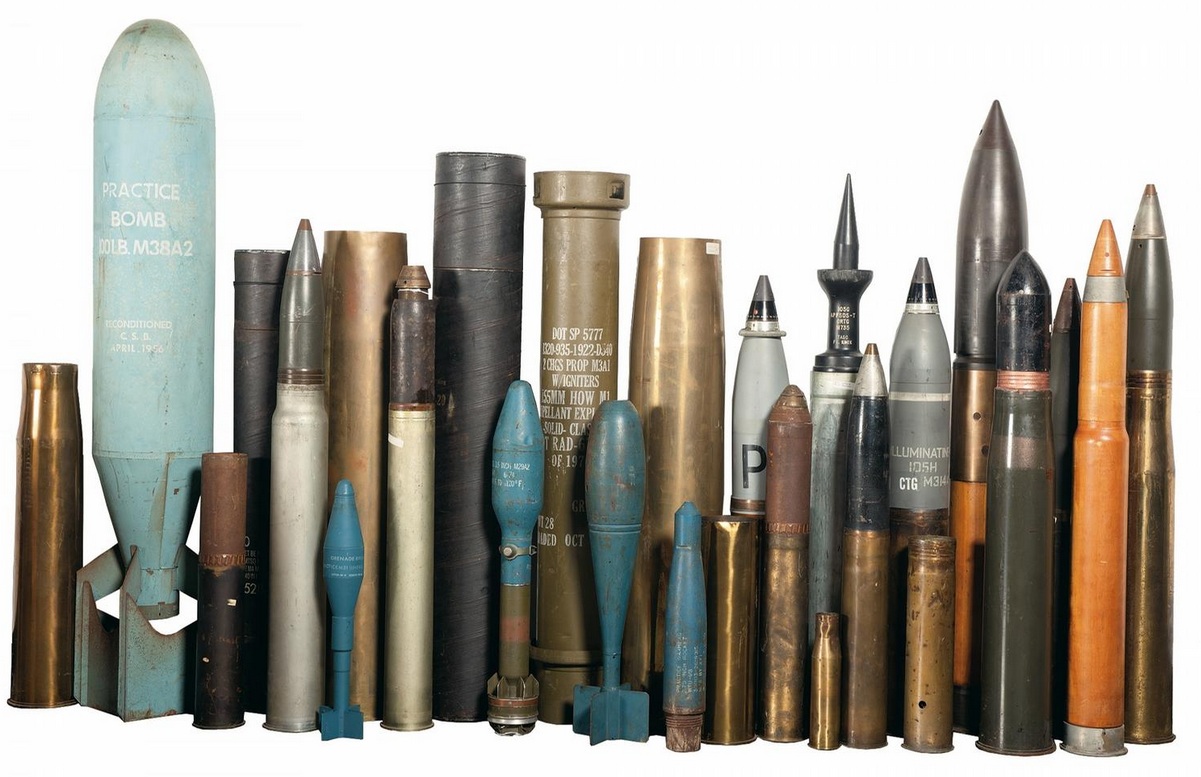
Like many collecting focusses, militaria collectors with a passion for acquiring inert ammunition have many influences, be they stories from their grandfather’s tales of WW2, or sight of a war veteran’s souvenir grenade on a top shelf in their garage. But this is a potentially lethal collecting focus, inert ammunition is often almost impossible to tell apart from live ammunition. Here are our top five tips for helping to collect safely.
Ammunition in the widest sense of the word covers anything that can be used as a weapon including aerial bombs, missiles, mines, grenades, artillery shells and firearms cartridges. Deactivated and inert ammunition means it is free from explosive and can no longer cause injury in the way the manufacturer intended. Ammunition makes a popular war souvenir and it can be acquired from militaria dealers and marketplaces for very little cost. Even the most collectable ammunition does not trade for significant values meaning you can build an impressive collection even on a budget.
Today here in the UK, inert, collector ammunition does not require a firearms certificate and no special precautions other than common sense need to be taken for their storage and display, however it is important to note the law may be different for international collectors. In all cases it is your responsibility to check the rules governing buying and selling to make sure your collecting is fully compliant with law.
The process of deactivation involves disassembly and sometimes drilling to remove explosive. Deactivation should only ever be carried out by qualified disposal, explosives or ammunitions experts with years of handling experience. Obviously this process damages the finish of the ammunition, so many collectors pieces are reassembled from original parts to retain the look of their original specification whilst being completely inert. Whilst the collector ends up with a very interesting display piece that looks complete and unfired, this approach has its obvious draw backs. It is very difficult to tell the inert ammunition apart from the lethal, live version. When you’re looking to add to your collection this could mean you end up buying something that could seriously maim or kill you or others nearby.
Here are our top 5 tips to help you stay safe if you’re planning on collecting inert ammunition:
1) Become an expert in your ammunition type
There is plenty of reference material available to identify and inform you on ammunition types, head stamps, colour coding and composition. Buy the books first and do some reading. Research how types of ammunition are deactivated and know how to spot the signs, colours and stamps that show the work has been done professionally. What you don’t know can seriously hurt you, so make sure you are informed before approaching any purchase.
2) Always assume the ammunition is live
Just because the piece is old and corroded does not mean it is inert despite what some may say. Age can often make a piece of live ammunition unstable and even more dangerous. If ever caveat emptor applied to a purchase, this is it. The general rule is that if you cannot see inside a piece of ammunition, or you are not reliably informed from a trusted source exactly how and who rendered it inert, it is live and you should treat it with extreme caution. The safest purchases are cross-sectioned ammunition, where the propellants are removed or clearly replaced with a simulant.
3) Only buy inert ammunition from reputable militaria dealers.
Choose a trusted seller with a reputation in the collecting business to minimise your risk of picking up something that has not been rendered inert professionally and correctly. This especially applies if you are buying online. Check the seller has a reputable business, and search online for any buyer feedback before you decide to transact. But even reputable dealers can get it wrong sometimes, so make sure you have some of your own knowledge on ammunition type to fall back on. Do not buy items from yard sales, or ammunition that has been recovered from the ground or underwater. These items are more likely to be live than not. You should discuss such items with the seller; they themselves may not be aware they have a potentially dangerous artefact on their hands and you may need to escalate to the Police to be dealt with correctly.
4) Use your common sense; this is a world with heightened security tensions
Don’t leave your ammunition collection on open display, carry your newly purchased inert artillery shell under your arm down the street, or put a bring-back relic grenade in your hand luggage from that overseas holiday. If you need to mail your collector’s ammunition, consult with your courier to make sure shipment complies with their rules – don’t send it by standard postage. Do any of these and you will likely be getting to know your local law enforcement authorities very well soon. As a collector of ammunition you have a responsibility to ensure that your collection does not cause a public disturbance.
5) Never load inert collector ammunition into a weapon
You will probably dent them especially if you dry fire. Dented ammunition has the very least value, and you never know, if it turns out you bought a live round by mistake you could find yourself in a very serious situation. Also whilst on the subject of preservation, as nice as it is to have a row of sparkling brass cartridges or shells on your shelf, do not polish or lacquer your collection. You are removing the authenticity of the ammunition, and therefore you will reduce the collectability and sale value. If you must clean your collection, caution and patience are the watch-words and proceed with only most gentle method – soap and water.
So if this article hasn’t put you off collecting inert ammunition and ordnance, where do you go next? Visit our Inert Ammunition and Ordnance buying pages of course and put our tips into practice.

